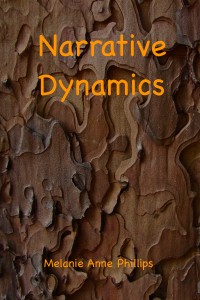Excerpted from the book, Narrative Dynamics
The Dramatica Model
In this book, I’m documenting the development of a whole new side of the Dramatica theory – story dynamics.
Dramatica is a model of story structure, but unlike any previous model, the structure is flexible like a Rubik’s Cube crossed with a Periodic Table of Story Elements. If you paste a story element name on each face of each little cube that makes up the Rubik’s Cube, you get an idea of how flexible the Dramatica model is.
That’s what sets Dramatica apart from other systems of story development and also what gives it form without formula. Now, imagine that while the elements on each little cube already remain on that cube, they don’t have to stay on the same face. In other words, though there will be an element on each face, which ones it is next to may change, in fact will change from story to story.
What makes the elements rearrange themselves within the structure? Narrative Dynamics. Think of each story point as a kind of topic that needs to be explored to fully understand the problem or issue at the heart of a story. That’s how an author makes a complete story argument. But, just as in real life, the order in which we explore issues is almost as important as the issues themselves. At the very least, that sequence tells us a lot about the person doing the exploring. In the case of story, this is most clearly seen in the Main Character. So, the order of exploration of the issues by the Main Character illuminate what is driving him personally.
The Dramatica model already includes a number of dynamics that describe the forces at work in the heart and mind of the Main Character, as well as of the overall story, the character philosophically opposed to the Main Character and of the course of their relationship as well. But, in a structural model – one in which the focus is on the topics and their sequence, there are a lot of dynamics that simply aren’t easily seen.
For example, you might know that in the second act, the Main Character is going to be dealing with issues pertaining to his memories. But how intensely will he focus on that? How long will he linger? Will his interest wane, grow, or remain consistent over the course of his examination of these issues. From a structural point of view, you just can’t tell.
And that is why after all these years I’m developing the dynamic model – to chart, predict and manipulate those “in-between” forces that drive the elements of structure, unseen. Part of that effort is to chart the areas in which dynamics already exist in the current structural projection of the model.
Read Narrative Dynamics


